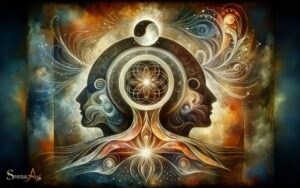Spiritual Egyptian Symbols and Meanings: Ankh, Eye of Horus!
Spiritual Egyptian symbols hold significant importance not only in the context of ancient Egyptian culture but also in modern interpretations and popular culture.
These symbols are imbued with deep meanings and are often associated with gods, power, protection, and eternal life.
For instance, the Ankh symbolizes life and immortality, the Eye of Horus represents protection and healing, and the Scarab beetle is a symbol of rebirth and transformation.
Spiritual Egyptian symbols were used for various purposes including rituals, magic, and as amulets.
Each symbol has its own unique story and symbolism:
The mystique of ancient Egyptian symbols continues to fascinate historians, spiritual seekers, and art enthusiasts, contributing to their enduring presence in modern culture and iconography.
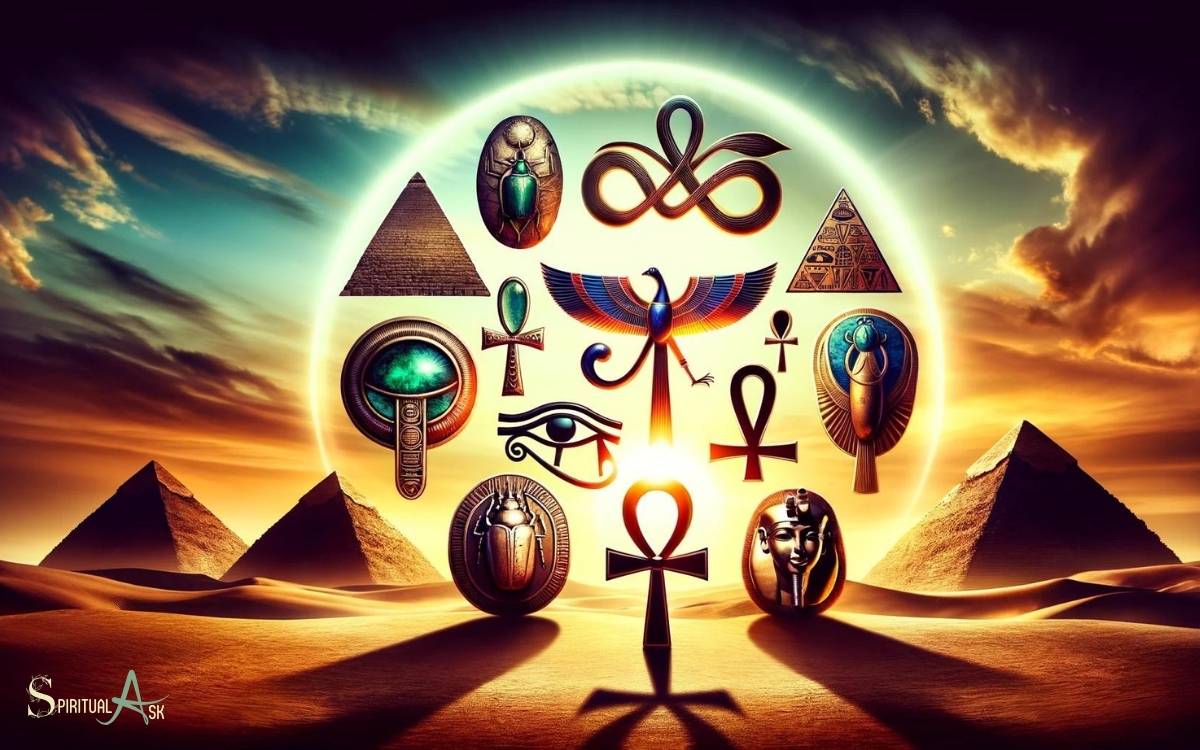
Key Takeaway
The Ankh: Symbol of Life and Immortality
The Ankh’s significance as a symbol of life and immortality is deeply rooted in ancient Egyptian culture. It represents the concept of eternal life and is often seen in the hands of deities in ancient Egyptian artwork.
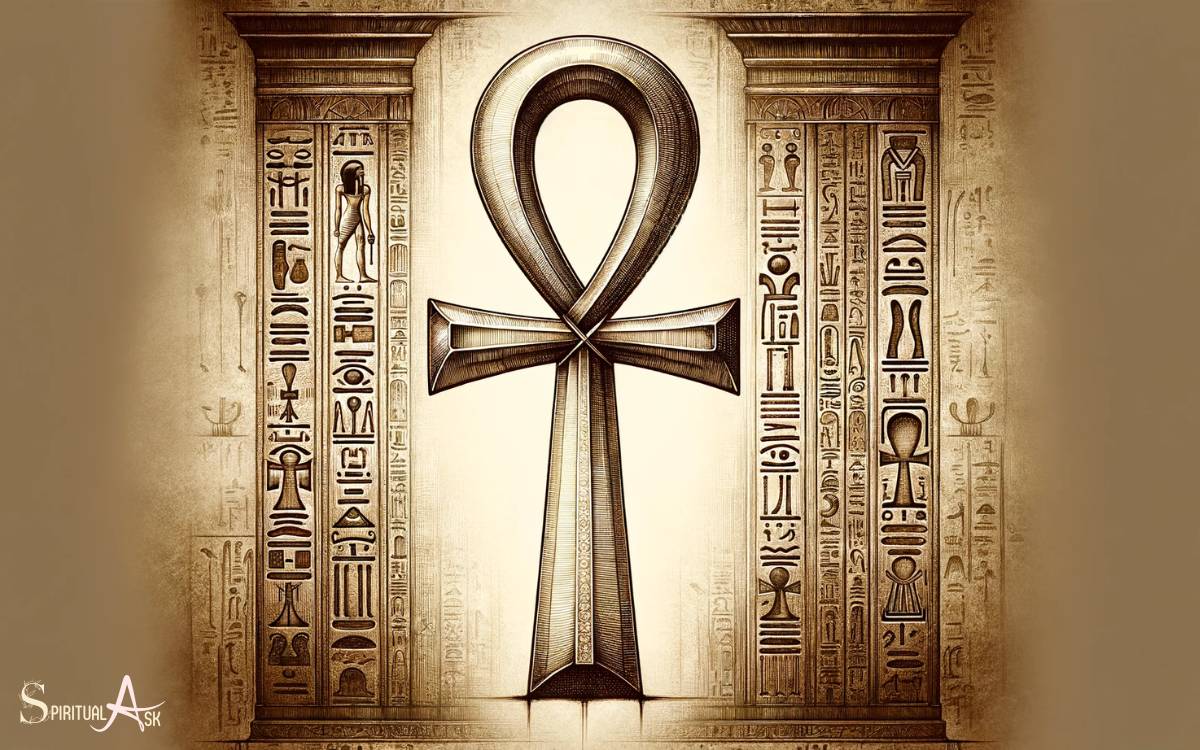
The loop at the top is believed to symbolize the sun on the horizon, offering the promise of a new day and the continuation of life. Its resemblance to a key has led to the interpretation of the Ankh as a key to the afterlife.
As a symbol of life and immortality, it was often used in funerary art and was held by the deceased as a sign of their transition to the afterlife.
The Ankh continues to hold significance in modern spirituality, representing the enduring nature of life and the eternal cycle of existence.
The Eye of Horus: Protection and Healing
Eye of Horus’s significance as a symbol of protection and healing is deeply ingrained in ancient Egyptian beliefs and practices.
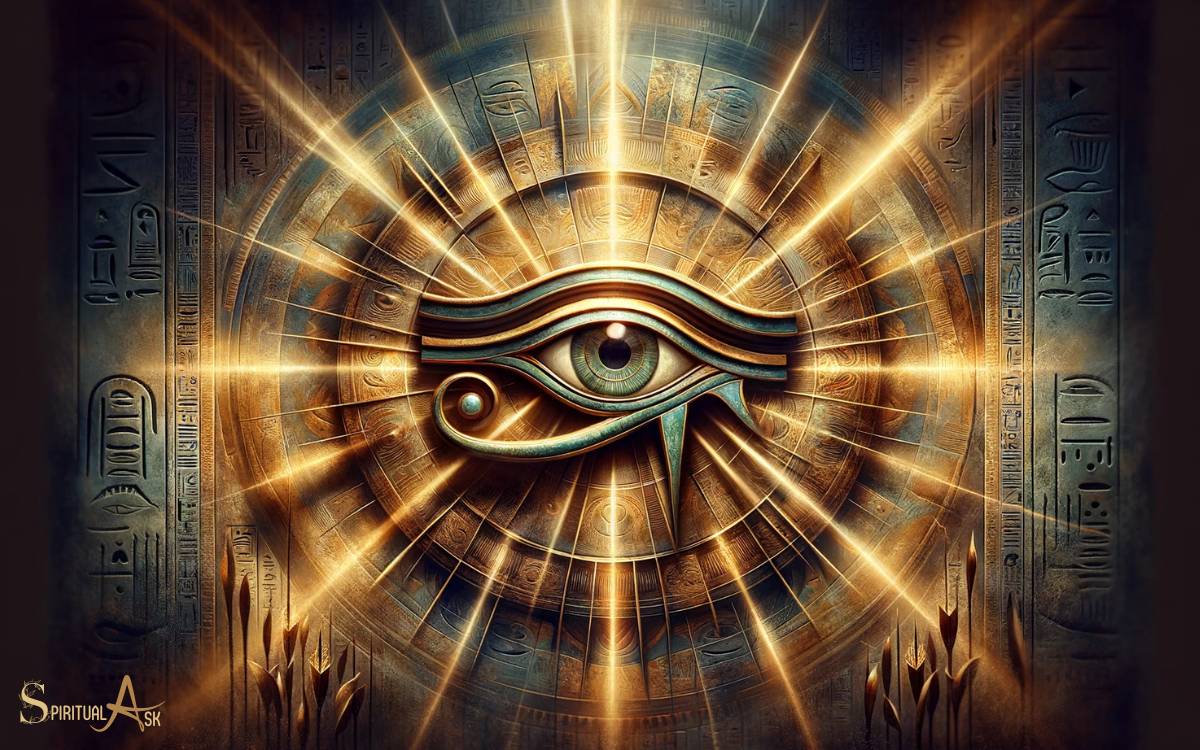
It represents the eye of the falcon-headed god Horus, symbolizing power, health, and protection. This iconic symbol is thought to bring about inner strength and ward off negative energies. The Eye of Horus has been revered since ancient times, often used as an amulet to safeguard its wearer from harm. Its association with evil eye symbolism and protection further amplifies its significance, as it is believed to shield against jealousy and malevolence from others. Many people still incorporate this powerful symbol into jewelry and home decor, hoping to invoke its attributes of resilience and safety in their lives.
Here’s why the Eye of Horus holds such significance:
- Healing: The Eye of Horus is believed to possess magical healing abilities, offering protection and promoting physical well-being.
- Divine Protection: It is seen as a powerful protective symbol, guarding against evil forces and bringing safety to the wearer.
- Spiritual Insight: In addition to physical healing, the Eye of Horus is associated with providing spiritual clarity and insight, aiding in one’s journey towards enlightenment.
Understanding the deep-rooted meanings behind the Eye of Horus enhances its significance in ancient Egyptian spirituality.
The Scarab: Symbol of Resurrection and Transformation
As I explore the spiritual significance of ancient Egyptian symbols, I am drawn to the scarab, a powerful symbol of resurrection and transformation.
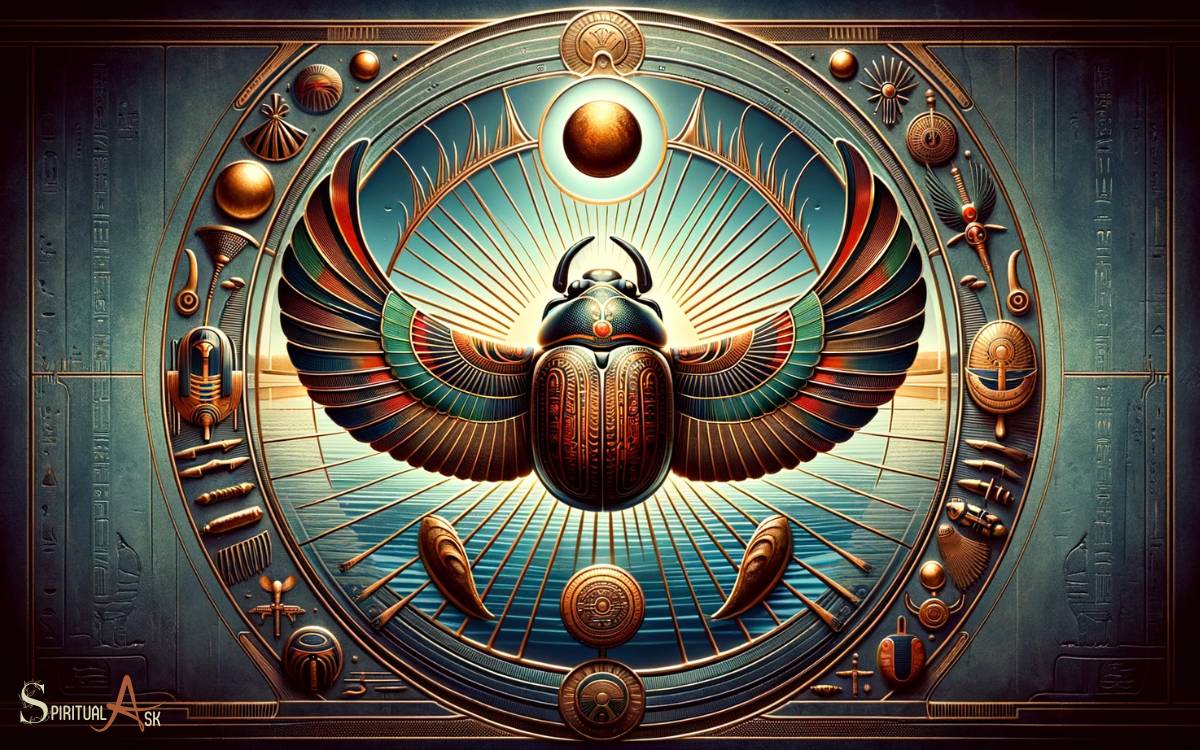
The scarab beetle, also known as the dung beetle, was revered by the ancient Egyptians for its remarkable behavior of rolling dung into a ball and laying its eggs inside it, which symbolized the sun’s daily journey across the sky and the cycle of life, death, and rebirth.
The scarab was associated with the god Khepri, who represented the rising or morning sun, and was believed to possess the power of transformation and regeneration.
It was often used in amulets, jewelry, and tomb decorations to provide protection and facilitate the journey to the afterlife.
The scarab serves as a reminder that life is a continuous cycle of renewal and that transformation is possible.
The Djed Pillar: Stability and Endurance
Exploring the spiritual significance of ancient Egyptian symbols, I am drawn to the Djed Pillar, a symbol representing stability and endurance, which, like the scarab, holds deep meaning in the cycle of life, death, and rebirth.
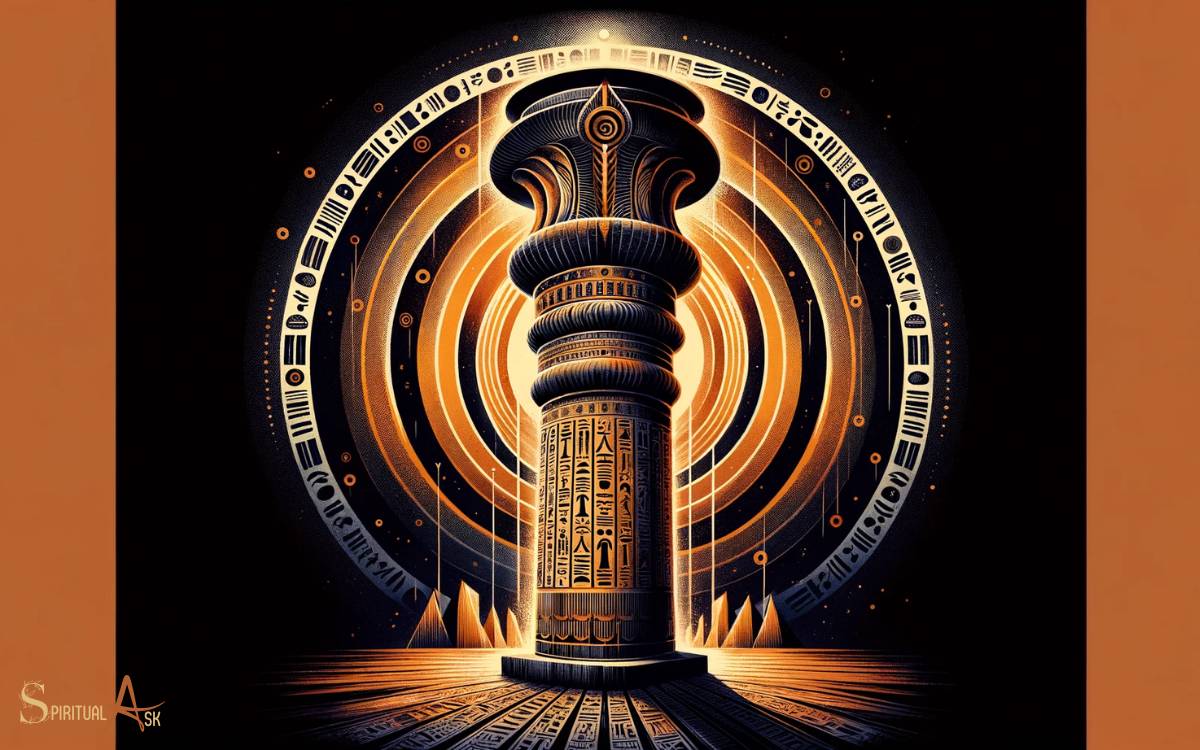
The Djed Pillar is a powerful and enigmatic symbol, embodying various aspects of Egyptian spirituality.
Here’s why it captivates me:
- Symbolic Representation: The Djed Pillar is often linked to the god Osiris, symbolizing his spine and connoting strength and stability.
- Ritual Significance: It played a crucial role in the annual Osiris festivals, signifying resurrection and the enduring nature of life.
- Artistic Depictions: The Djed Pillar is frequently depicted in ancient Egyptian art and architecture, showcasing its importance in their belief system.
As with the scarab, the Djed Pillar’s symbolism intricately ties into the Egyptians’ profound understanding of the eternal cycles of existence.
The Lotus Flower: Symbolism of Rebirth and Enlightenment
Fascinatingly, I often find the lotus flower symbolizing rebirth and enlightenment in ancient Egyptian spirituality.
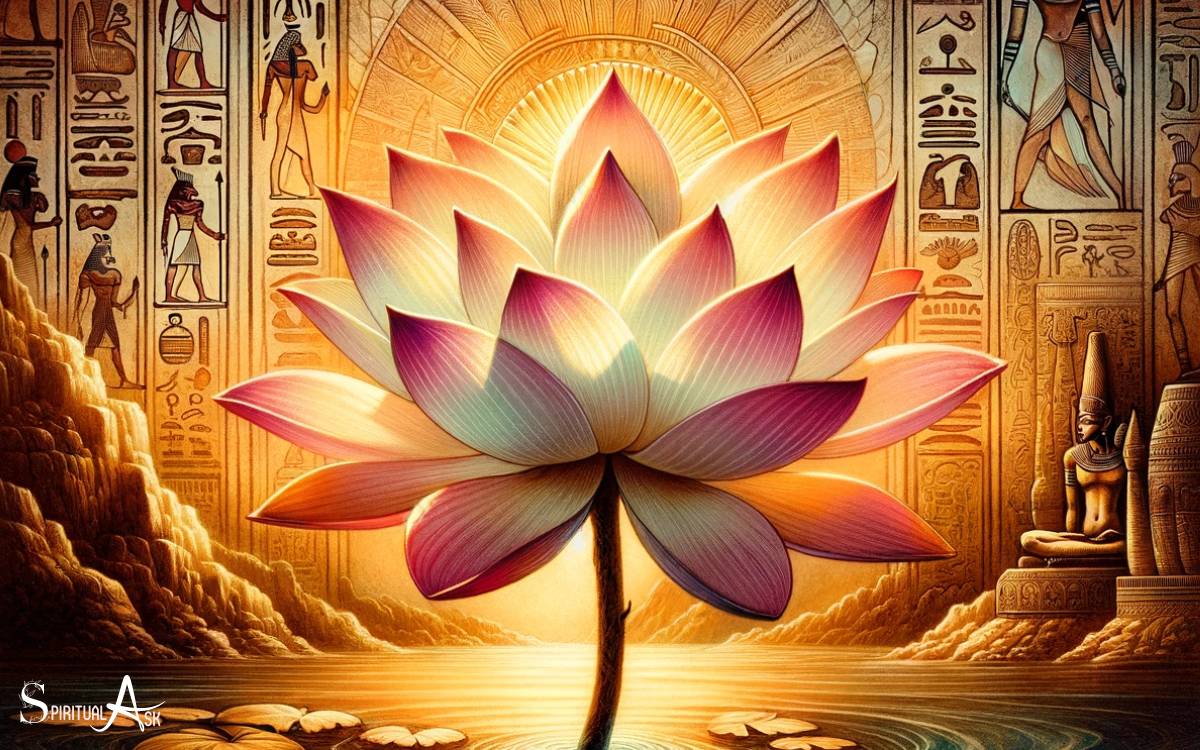
The lotus, with its ability to emerge from murky waters and bloom into a stunning flower, represents the cycle of life, death, and rebirth. This process mirrors the journey of the soul towards enlightenment and spiritual awakening.
In Egyptian mythology, the lotus is also associated with the sun and creation, reinforcing its significance in the context of rebirth and regeneration.
The flower’s daily cycle of sinking underwater at night and rising again at dawn mirrors the journey of the sun across the sky, further emphasizing its ties to spiritual enlightenment.
The lotus, therefore, serves as a powerful reminder of the potential for inner transformation and the continual pursuit of higher consciousness.
Conclusion
These spiritual Egyptian symbols are rich with meaning and significance. Did you know that the Ankh, the symbol of life and immortality, was often used in ancient Egyptian art and jewelry?
It’s fascinating to see how these symbols have endured through history and continue to hold deep spiritual meaning for many people today.



